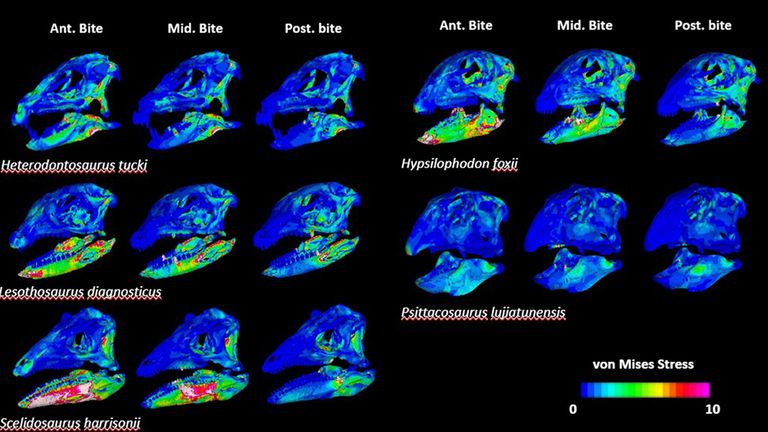Plant-eating dinosaurs had a “surprising variation” in how they ate their food despite having a similar diet, research suggests.
By analysing skull specimens of herbivores such as the Jurassic-era Heterodontosaurus and Leothosaurus, British scientists determined that their eating styles changed based on their jaw muscles and biting actions.
It represents another sign of “how innovative and unpredictable evolution can be”, scientists said, as all plant-eating dinosaurs were already thought to have descended from a single carnivorous ancestor.
Senior study author Professor Paul Barret, a Natural History Museum palaeontologist, said: “If you want to understand how dinosaurs diversified into so many different types so effectively, it’s critical to learn how they evolved to feed on such a wide variety of vegetation in so many different ways.
“This diversity in feeding mechanisms set them up to dominate life on land for millions of years to come.”
The Heterodontosaurus and Leothosaurus skulls were studied alongside those of Scelidosaurus, Hypsilophodon, and Psittacosaurus – all of which belonged to a group of herbivorous creatures known as Ornithischia.
Researchers were then able to reconstruct the jaw muscles of the five dinosaur species and simulate their biting action, which suggested they had a different way of eating plants.
While Heterodontosaurus’s large jaw muscles relative to its skull size saw it produce a high bite force ideal for consuming tough vegetation, the Hypsilophodon had smaller muscles and rearranged them to bite more efficiently.
More dinosaur news:
Skeleton of 82ft dinosaur found in backyard
First record of dinosaur eating a mammal 120m years ago
Lead author Dr David Button said: “When we compared the functional performance of the skull and teeth of these plant-eating dinosaurs, we found significant differences in the relative sizes of the jaw muscles, bite forces and jaw strength between them.
“This showed that these dinosaurs, although looking somewhat similar, had evolved in very different ways to tackle a diet of plants.”
The findings were published in the journal Current Biology.

